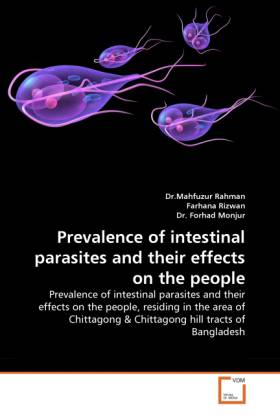
- Afhalen na 1 uur in een winkel met voorraad
- Gratis thuislevering in België vanaf € 30
- Ruim aanbod met 7 miljoen producten
- Afhalen na 1 uur in een winkel met voorraad
- Gratis thuislevering in België vanaf € 30
- Ruim aanbod met 7 miljoen producten
Zoeken
Prevalence of intestinal parasites and their effects on the people
Prevalence of intestinal parasites and their effects on the people, residing in the area of Chittagong & Chittagong hill tracts of Bangladesh
Mahfuzur Rahman, Farhana Rizwan, Forhad Monjur
Paperback | Engels
€ 67,45
+ 134 punten
Omschrijving
Intestinal parasites & protozoan infections are the most common in worldwide,particularly in the tropical & subtropical developing countries.It is estimated,3.5 billion people are affected & 450 million are ill as a result of the infections,the majority being children.The parasites can cause various diseases,because of increasing travel to developing countries,increased number of immune-compromised individual;consumption of raw or partially cooked food & endemic pockets of individuals with certain unhygienic or unsanitary practices.The objective was to see the status of infectious parasites in Chittagong & Hill Tracts.The study was based on the analysis of fecal samples of humans,forty one(41)parasite species recorded,four protozoans & four nematodes were present.The prevalence of infection was found to have a strong relationship with the socio-economic & health conditions of their habitations. A.lumbricoides,T.trichiura,E.histolytica / E.dispar & G.lamblia were the four dominant species occupying more than 98% of prevalence of infection. Among the cases(88%) infection was by the single Parasite.Double infection was(10%) & triple infection was virtually absent(0.02%).
Specificaties
Betrokkenen
- Auteur(s):
- Uitgeverij:
Inhoud
- Aantal bladzijden:
- 168
- Taal:
- Engels
Eigenschappen
- Productcode (EAN):
- 9783639340433
- Uitvoering:
- Paperback

Alleen bij Standaard Boekhandel
+ 134 punten op je klantenkaart van Standaard Boekhandel
Beoordelingen
We publiceren alleen reviews die voldoen aan de voorwaarden voor reviews. Bekijk onze voorwaarden voor reviews.











